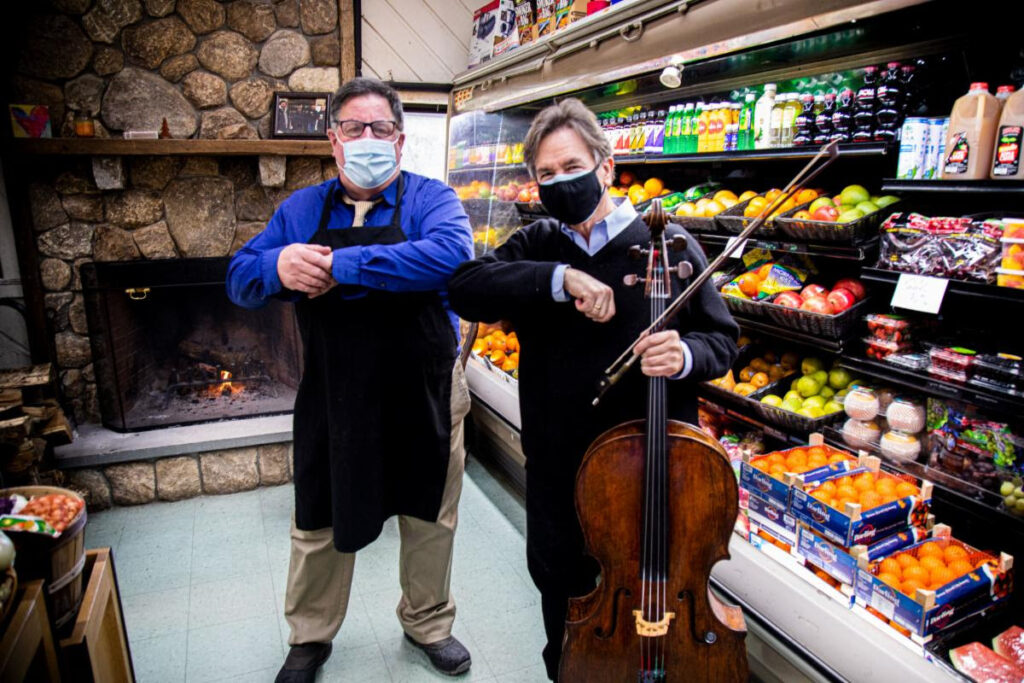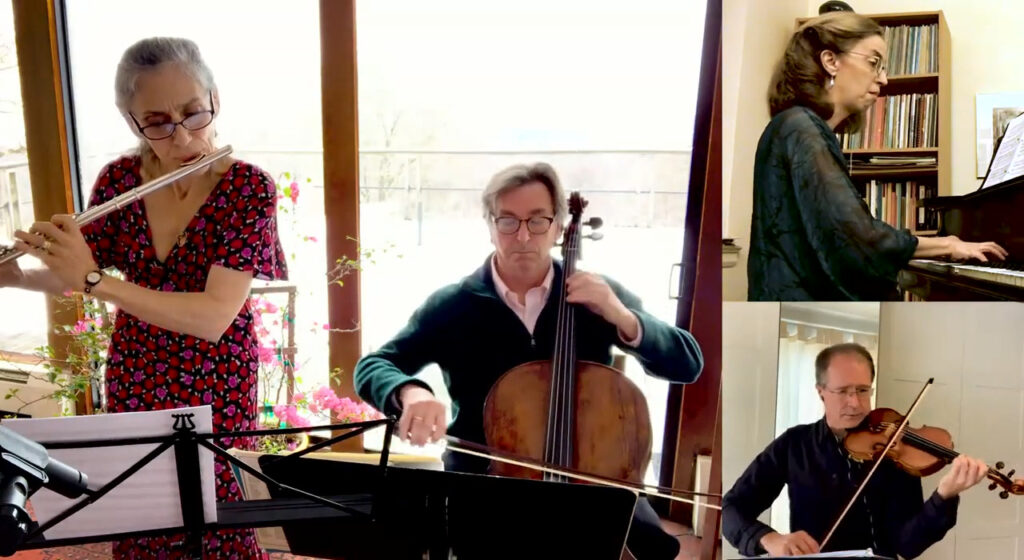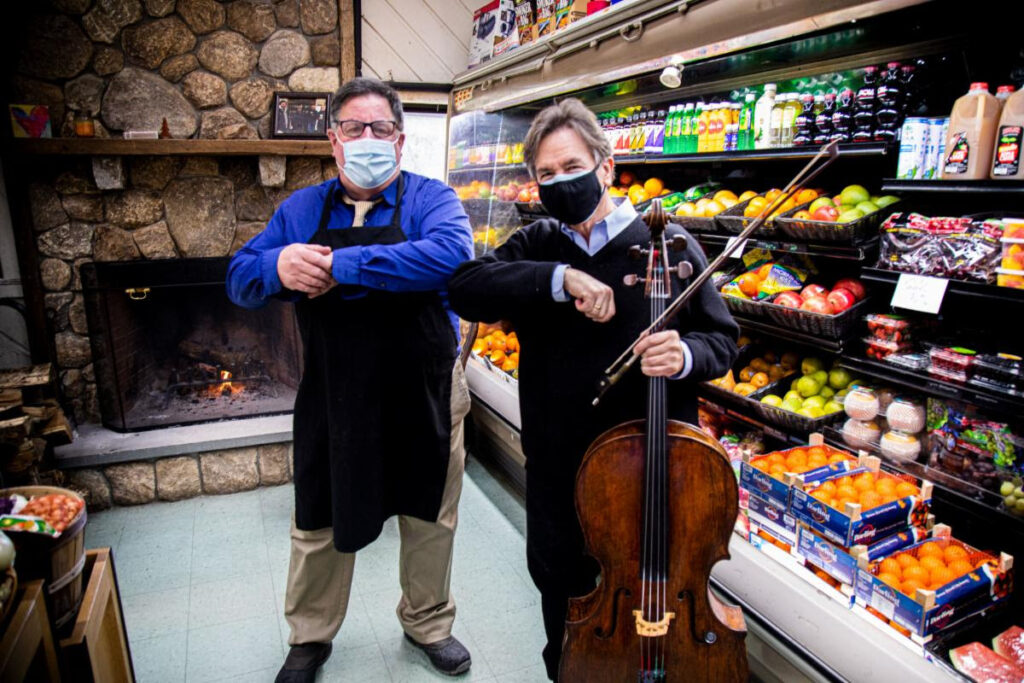
by Kevin T. McEneaney
The Virtual World is now the place to be. Recording technology, both video and audio, has been a fallback for musicians who continue to be active during the current pandemic. The Sherman Ensemble premiered Baroque Lights on the afternoon of Saturday the 16th. First on the program was that early master of the Baroque, Arcangelo Corelli with Trio Sonata in F Major, Op. 3, No. 1, one of twelve sonatas dedicated to Queen Christina of Sweden. Trio here means written in three parts, yet it was quite common to have four of five players dividing parts.
In this case the firs two movements were played by Susan Rotholz, flute; Paul Woodiel, violin; Jed Gaylin; and founder Eliot Bailen, cello. The opening Grave movement sounded like a farewell elegy for a friend of the Queen, probably a member of the court inner circle. Subsequent more lively movements appeared to revel in appreciation of the departed’s encoded in recollection. Woodiel, whose violin carries the immediacy of a spark, dropped out after the first two movements where the lead was divided between Rotholz and Woodiel. From now on it was Rotholz who dominated with her ethereal flute. I found the piece to be lively and interesting. It’s a pity that Corelli’s work is not performed as often as it should be performed outside of Italy.
An Air from the orchestral Suite in G Major, BWV 1068, by J.S. Bach followed on electric bass guitar by young Daniel Bailen. This updated version was unexpected yet lively in this lower register.
Next was Badinerie from the Orchestral Suite by J.S. Bach in B Minor, BWV 1067, and Prelude from the Suite in G Major.

These two short works featured flute and violin with expert aplomb and diffused that spirit of geniality that listeners so prize in Baroque pieces. Bach’s signature of joy was tangibly evident.
This same quartet swept into the more extroverted Trio Sonata Op. 2 No. 1 (1879) by Georg Friedrich Handel. This later Baroque gem offers an example of Handel’s contagious humor in four movements. I found the slow Largo immensely attractive and the final two movements brimming with exuberant panache. Roth’s violin lead in the first two movements while Rotholz on flute led in the following two—all movements being supported by Bailen on cello with the bass line and Margaret Kampmeier on piano with lively treble line. The unified meld of their performance swept me along.
In a technical, musical tour-de-force Eliot Bailen performed Antonio Vivaldi’s Concerto for Two Cellos in G Minor, RV 531, as arranged for six celli by Orfeo Mendozi wherein Bailen simultaneously plays six cellos. At any given time two or three images of Bailen were playing together or even all six at once with united synchronicity. Talk about split personality! Each of the six cellos vied for prominence, although there was only one expert cellist who came out on top—Eliot Bailen providing sixfold cheer in these days when we tend to live more solo lives due to the current pandemic.

This work was in three parts. The second part offered a video of walking through the woods. Here was a meditative stroll on nature amid patchwork snow, tall bare trees, blue sky, and the flow of creek water over ice and rocks. The final comic movement occurred in a small general store where Bailen played in the aisle beside stacks of jam jars, juice, potato chips, bottled pickles, and laundry detergent.
In the final scene Bailen carts his cello out of the store in a steel shopping cart. These moments of fun transmitted alacrity of humor and I am sure that old Master Vivaldi would have enjoyed this joke—after all priest Vivaldi was defrocked by interrupting the Church service ritual of consecration at mid-point and retiring to his office to pen some inspired lines of music that had just entered his head.
This amusing and delightful performance is available on YouTube at: https://youtu.be/uAqbuNFXT5E
